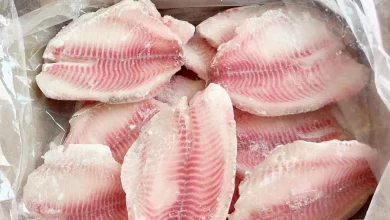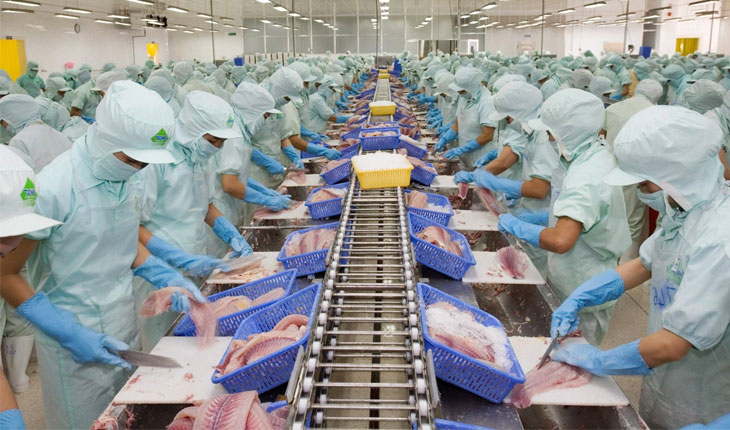Price of Vietnamese shrimp material hit the bottom
Some businesses think that processing businesses are buying shrimp at nearly bottom prices and they are recovering in accordance with the supply-demand law even though prices are just inching up.
According to WiGroup, the average price of white leg shrimp stayed at nearly 88,000 dong/kg as of June 18, versus 83,800 dong/kg in late May. Prices of black tiger shrimps, which are staying flat around 183,000 – 184,000 dong/kg, have constantly gone down since Tet Holiday. However, the fall slowed down from week 21 to week 23.
According to VASEP, poor sales of shrimps have been due to lower demand in importing markets amid the rising inflation. Thus, the shrimp export value declined to USD 1.2 billion, down 34% in the first five months of the year. Poor consumption resulted in a constant fall of shrimp material prices from Jan to May.
However, the shrimp export value is recovering month on month, with about USD 313 million worth this month, up 9% from April.
The rising price of shrimp material in June was considered a good sign. According to Hồ Quốc Lực, Chairman of Sao Ta Foods JSC, the stocking has declined for the last two months, leaving a consequence of just a small number of commercial shrimps being sold in the market, meanwhile June used to be the main harvest season. As a result, processing businesses are buying shrimps at nearly bottom prices and they are recovering in accordance with the supply-demand law even though prices are just inching up, Lực anticipated. He added that most of the businesses have been living on bank loans.
Vietnamese shrimps may not compete against Ecuador and India
Even though shrimp prices are on the upward trend, Vietnamese farmers have to pay more on production costs than competitors.
Lê Văn Quang, Chairman and General Director of Minh Phu Seafood Corporation said that shrimp culture in Vietnam costs twice as much as in Ecuador and 30% higher than in India. Meanwhile the success rate of shrimp culture in Vietnam reaches under 40%, much lower than in Ecuador and India.
Stocking density in Vietnam reaches 250-500 pcs/m2 while it is 60 pcs/m2 in India and just 20-30 pcs/m2 in Ecuador. Vietnamese shrimp farmers have to spend much money on essential materials such as feed, breeding stocks, probiotics, chemical substances, additives, power, and lime.
Quang said that in the early 2020s, Vietnam was just behind China and Thailand in terms of output. But now Vietnam is trailed by Ecuador, India, and Indonesia. In his opinion, the success rate in shrimp culture must be improved up to at least 70%, by rearing SPR and adjustable breeding stocks, stocking at a low density, and improving the product value with ACS and BAP certificates and traceability scheme.
VFM






